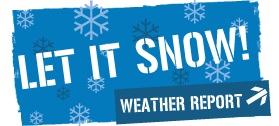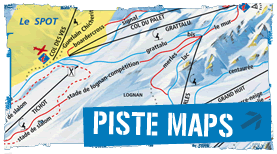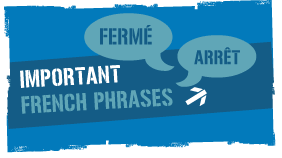Weekly report from HAT - 03/03/09
HAT Snow Report:
Generally Stable Snowpack
Several light snowfalls will lead to nice snow off piste, but some new instability.
After some nice snow showers at the end of the week, on March 4-5, this weekend will give us some more snow by the end of Sunday. There may be some instability that comes along with the new snow. So, while I’m enjoying the fresh snow, I’ll be watching out for this instability.
Where will the best snow be and where will it be unstable?
I’ll be looking at areas where the wind has blown the new snow. For two reasons: 1. Because this is where I’ll find the good snow! 2. There will be a bit of instability – so I want to watch out when I’m in these ‘wind-loaded’ areas.
Where will the wind be blowing the snow?
The winds have been and will be blowing from the East and Southeast over the next few days (at least until Sunday), which will blow the snow mostly onto West to North-northwest facing slopes.
Even if there’s not a lot of new snow, the wind could be forming slabs big enough to take you for a ride. There will be some good snow there, but remember that most avalanche victims trigger the slab avalanche themselves!
Tip of the week:
You can find out where the wind has been blowing the snow and where the most instability is on a daily basis by checking out the Météo France Avalanche Forecast Bulletin which is free on their web site (and can be translated with google translate).
Here is the link for this week.
The direct link is rather long for those of you reading this in print. So here is a step-by-step guide to finding it:
To find the avalanche forecast bulletin for Savoie for example, choose ‘Montagne’ from the Meteo France home page. Now choose ‘Bulletins’. Then where it says Choisir une montagne choose ‘Alpes de Nord’ and finally where it says Choisir un département, choose ‘Savoie’.
This bulletin is updated at 4pm each day for the following day and includes a short weather forecast too!
You can also see a full summary of all the definitions of the international 1-5 avalanche danger rating scale on my blog and a recorded audio summary.
See Henry's Avalanche Talk for events this week!
Have Fun and Be Safe!
Henry
Avalanche Forecast Translation for March 4 2009 (original French below)
From Meteo France
BULLETIN FOR ESTIMATING THE RISK OF AVALANCHE
De SAVOIE valid outside of marked trails and open FOR WEDNESDAY, MARCH 4, 2009 (written on Tuesday, March 3)
ESTIMATE OF RISK UNTIL WEDNESDAY EVENING:
On ALL MASS: LIMIT RISK - Level 2
WEATHER OVERVIEW UNTIL WEDNESDAY EVENING:
After a cloudy night, slowly worsening cloud with the first rain in the afternoon in Haute Maurienne Bauges and then everywhere in the evening (snow 1300 m). South winds necessarily over for hours with gusts of Foehn / Lombard.
0 ° C isotherm: dating between 1500 and 1700 meters. Wind at 3000 m: SOUTHWEST to SOUTH-EAST SOUTH to 20 to 50 loc. 80 km / h.
Snow conditions:
They are correct and even a little above average as Haute Maurienne. There are the snow ski from 900 to 1400 meters depending on the slopes with thickness's of 60 to 120 cm from 1000 to 2000 m, locally 140 to 170 cm Bauges, and Beaufortain Haute Maurienne.
On the surface, there are now all with rapid changes from one sector to another. There is a spring snow below 1500/2000 m (regel then becoming heavy snow in 10 to 30 cm), there is a bit of snow (1 to 5 cm up to 10 cm fell Bauges Monday) on a hard snow or crusty over 1500/2000 m to 2400 m and even higher in South stiff, there is still a bit of dry snow in the North side from 2000/2400 m but there are also often compacted snow wind in the high mountains.
STABILITY Snowpack:
New plates and a bit of natural activity
The winds expected in South East (locally near the northern Valle d'Aosta) are likely to encourage a bit of snow transport rather over 2400 m, with the result of some new type instabilities plates (little thicker). As there are probably more old lying in altitude in the North to North-east, the risk extends a little accidental localization and is not totally negligible. Be careful along the Italian border, or when the topography becomes more negative (peak, corridor, slope break).
Furthermore, after the proper regel, humidification must take over for hours with perhaps an emphasis by foehn effect or greenhouse cloudy with sails, especially below 2000/2400 m. Some attrition are possible in the form of castings, plate surface but also a few patches of steep bottom slopes (Haute Maurienne Bauges for example).
TREND LATER RISK:
Likely to increase in precipitation and wind.
BULLETIN D'ESTIMATION DU RISQUE D'AVALANCHE
de SAVOIE valable hors des pistes balisées et ouvertes POUR LE MERCREDI 4 MARS 2009 (rédigé le mardi 3 mars)
ESTIMATION DES RISQUES JUSQU'A MERCREDI SOIR :
Sur TOUS LES MASSIFS : RISQUE LIMITE - niveau 2
APERCU METEO JUSQU'A MERCREDI SOIR :
Après de belles éclaircies nocturnes, lente aggravation nuageuse avec les premières précipitations l'après-midi en Haute Maurienne et Bauges puis un peu partout en soirée (neige à 1300 m). Les vents de Sud forcissent au fil des heures avec rafales de foehn/lombarde.
isotherme 0°C : remontant entre 1500 et 1700 mètres. Vent à 3000 m : SUD-OUEST à SUD à SUD-EST 20 à 50 loc. 80 km/h.
CONDITIONS D'ENNEIGEMENT :
Elles restent correctes et même un peu au-dessus des moyennes comme en Haute Maurienne. On trouve de la neige skiable dès 900 à 1400 mètres selon les versants avec des épaisseurs de 60 à 120 cm de 1000 à 2000 m, localement 140 à 170 cm en Bauges, Beaufortain et Haute Maurienne.
En surface, on trouve maintenant de tout avec de rapides variations d'un secteur à l'autre. On observe une neige printanière au-dessous de 1500/2000 m (regel puis neige devenant lourde sur 10 à 30 cm); il y a un peu de neige fraîche (1 à 5 cm parfois 10 cm en Bauges tombés lundi) sur une neige durcie ou croutée au-dessus de 1500/2000 m et jusqu'à 2400 m voire plus haut en Sud raide; il y a encore un peu de neige sèche en versant Nord à partir de 2000/2400 m mais on trouve également une neige souvent compactée par le vent en haute montagne.
STABILITE DU MANTEAU NEIGEUX :
DE NOUVELLES PLAQUES et UN PEU D'ACTIVITE NATURELLE
Les vents attendus de Sud à Est (localement Nord près du Val d'Aoste) vont sans doute favoriser un peu de transport de neige, plutôt au-dessus de 2400 m, avec comme conséquence quelques nouvelles instabilités de type plaques (peu épaisses). Comme il y a vraisemblablement de plus anciennes qui traînent en altitude en Nord à Nord-est, le risque accidentel s'étend un peu en localisation et n'est donc pas totalement négligeable. Méfiance le long de la frontière italienne ou quand la topographie devient plus défavorable (crêtes, couloir, rupture de pente).
Par ailleurs, après le bon regel, l'humidification doit reprendre au fil des heures avec peut-être une accentuation par effet de foehn ou effet de serre avec les voiles nuageux, surtout au-dessous de 2000/2400 m. Quelques départs naturels sont alors possibles sous forme de coulées, de plaques de surface mais également de quelques plaques de fond en pentes raides (Haute Maurienne, Bauges par exemple).
TENDANCE ULTERIEURE DU RISQUE :
En probable hausse avec les précipitations et le vent. Henry's Avalanche Talk

















